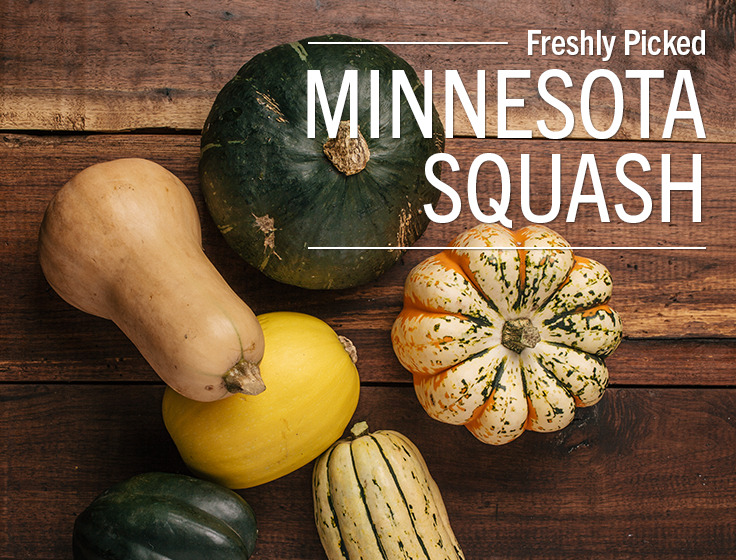The many varieties of squash and how to cook them
When you hear the word squash, what do you think of? Acorn squash? Spaghetti squash? Or maybe just a zucchini?
Truth is, squash comes in all shapes and sizes. What do they all have in common? Native to America, they’re all members of the gourd family and all grow on vines. They’re low in calories and high in nutrients: A four-ounce serving can provide 20% or more of your recommended daily value of magnesium, potassium and vitamins A, C and E. Squash is also a good source of calcium, antioxidants and beta-carotene.
There are almost 40 varieties of squash available in the United States, classified either as “summer squash” or “winter squash.” This terminology dates back centuries, and was based on durability rather than time of harvest: If a squash spoiled before winter hit, it was called a summer squash and if it kept well into the winter, it was called a winter squash.
Summer squash are thin-skinned and bruise easily. The smaller they are, the sweeter they taste. They also contain more water than winter squash. Varieties include zucchini, yellow zucchini, crookneck squash and pattypan squash. They generally last about a week in the fridge before they go bad.
Winter squash have thick, inedible rinds that make them more durable, and they contain less moisture than summer squash. Varieties include acorn squash, butternut squash, spaghetti squash and pumpkins. Winter squash keeps well in cool, dark places for up to three months. When storing a winter squash with a woody stem (like a pumpkin or butternut squash), make sure the stem is at least 4 inches long to help retain moisture. Softer stems can be 1-2 inches long.
For a simple overview of squash and pumpkins, their flavors, and their availability in stores, check out our squash and pumpkin guide.
Wondering how to prepare squash? It’s really quite versatile: You can use it in salads (like our fabulous Spaghetti Squash with Braised Cranberries and Arugula Blue Cheese Salad), as a side dish or baked in bread. Summer squash can be eaten raw or cooked, skin and all. Winter squash must be cooked, and the seeds are delicious roasted.
Looking for more recipe inspiration? Head over to Pinterest and check out our collection of great squash recipes for fall.
Look for a wide variety of winter and summer squash in our produce department.






